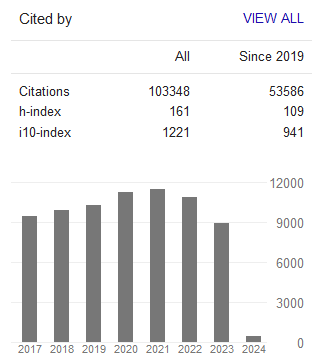Factors Impact on Religious Tourism Market: The Case of the Palestinian Territories
- Jafar Subhi Hardan Suleiman
- Badaruddin Mohamed
Abstract
Palestine, the home of the world’s three major religions: Islam, Judaism, and Christianity. Hence, is considered
as the first center of tourism due to the coming of these three major world faiths flocking to Palestine to engage
in sacred pilgrimages. Some of these sites which are frequently visited are Jerusalem, Nazareth, Jericho,
Bethlehem and Hebron. Palestine was for many centuries a destination of pilgrims and visitors of Muslims and
Christians from all over the world. Unfortunately, Palestine after the 1948 War fell under the Israeli Occupation
and was exposed to many catastrophes up until this time; all this led to the instability and the decrease in the
number of tourists to Palestine; which had become a dangerous area which reduced the flow of tourism in
general. At the same time, came the peace negotiations between the PLO (Palestinian liberation organization)
and Israel in Oslo which was signed in Washington in 1993. In this period there was an economic recovery and
tourism in the Palestinian Territories, especially in the West Bank and Gaza Strip started to once again flourish.
The Primary purpose of this paper is to show the significance of the religious tourism in Palestine and influence
of conflict on Palestinian tourism; also indicated which factors impacts on Palestinian tourism as well.
This paper concludes that Palestine is unique, due to its history, heritage, culture, geographic location,
environment and religions. This study suggests to the Ministry of Tourism and Antiquities in Palestine to create
new forms to protect the Islamic and Christian places in Palestine as well as to encourage more tourists to visit.
Peace is considered as a vital strategy for enhancing the Palestinian tourism industry.
- Full Text:
 PDF
PDF
- DOI:10.5539/ijbm.v6n7p254
Journal Metrics
Google-based Impact Factor (2023): 0.86
h-index(2023): 152
i10-index(2023): 1168

Index
- Academic Journals Database
- AIDEA list (Italian Academy of Business Administration)
- ANVUR (Italian National Agency for the Evaluation of Universities and Research Institutes)
- Berkeley Library
- CNKI Scholar
- COPAC
- EBSCOhost
- Electronic Journals Library
- Elektronische Zeitschriftenbibliothek (EZB)
- EuroPub Database
- Excellence in Research for Australia (ERA)
- Genamics JournalSeek
- GETIT@YALE (Yale University Library)
- IBZ Online
- JournalTOCs
- Library and Archives Canada
- LOCKSS
- MIAR
- National Library of Australia
- Norwegian Centre for Research Data (NSD)
- PKP Open Archives Harvester
- Publons
- Qualis/CAPES
- RePEc
- ROAD
- Scilit
- SHERPA/RoMEO
- Standard Periodical Directory
- Universe Digital Library
- UoS Library
- WorldCat
- ZBW-German National Library of Economics
Contact
- Stephen LeeEditorial Assistant
- ijbm@ccsenet.org
